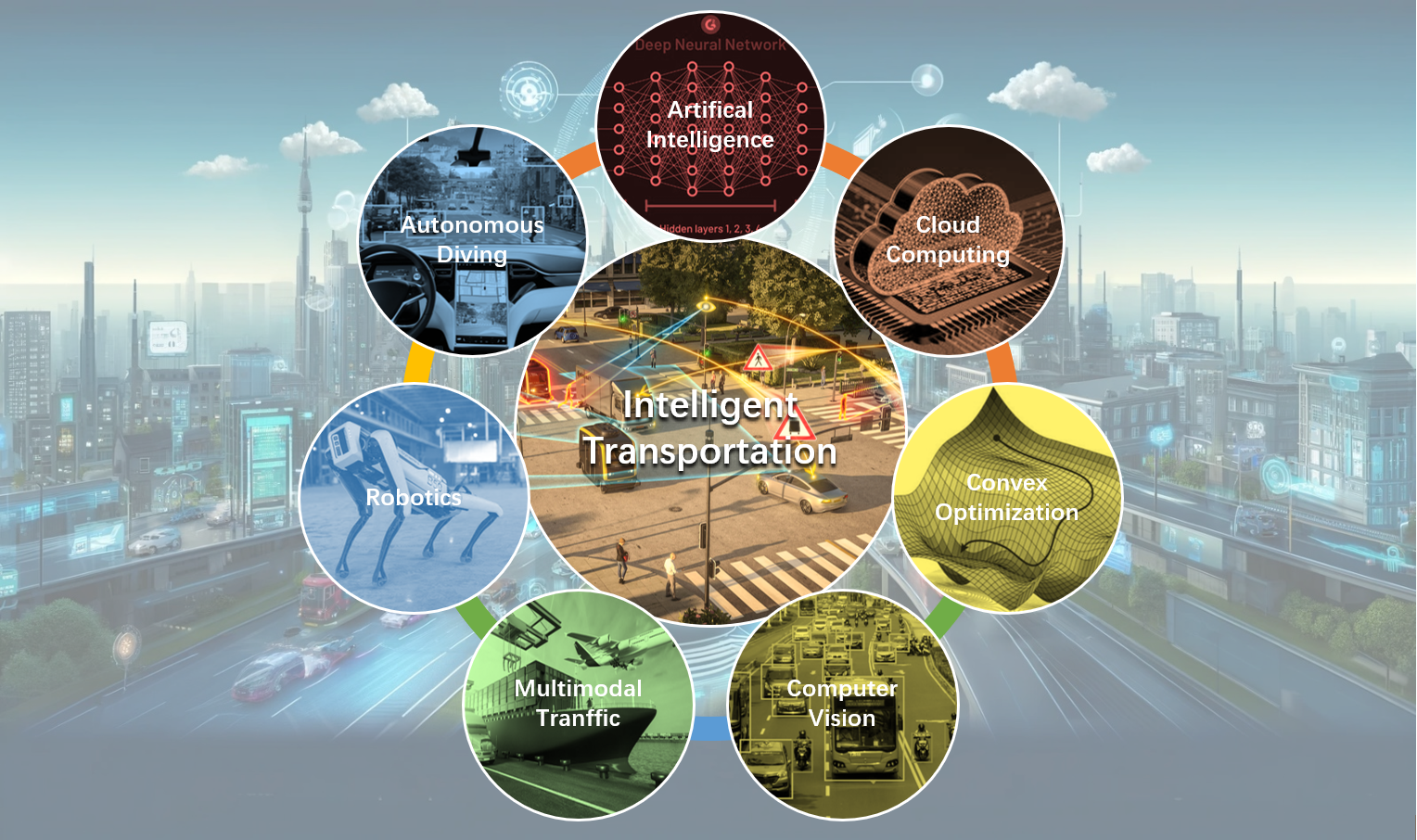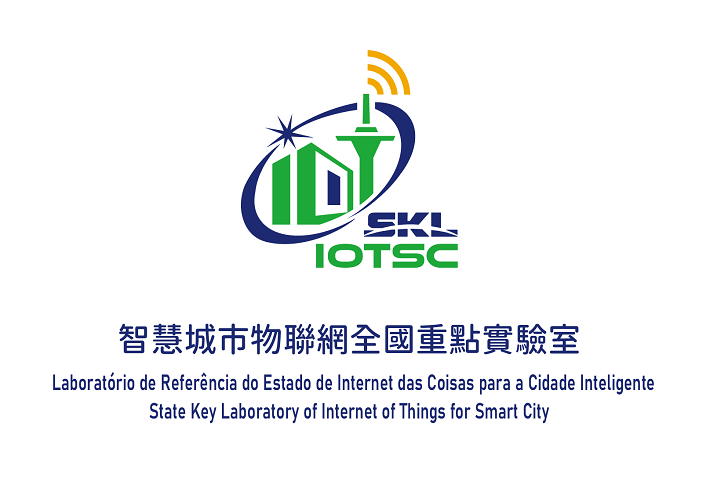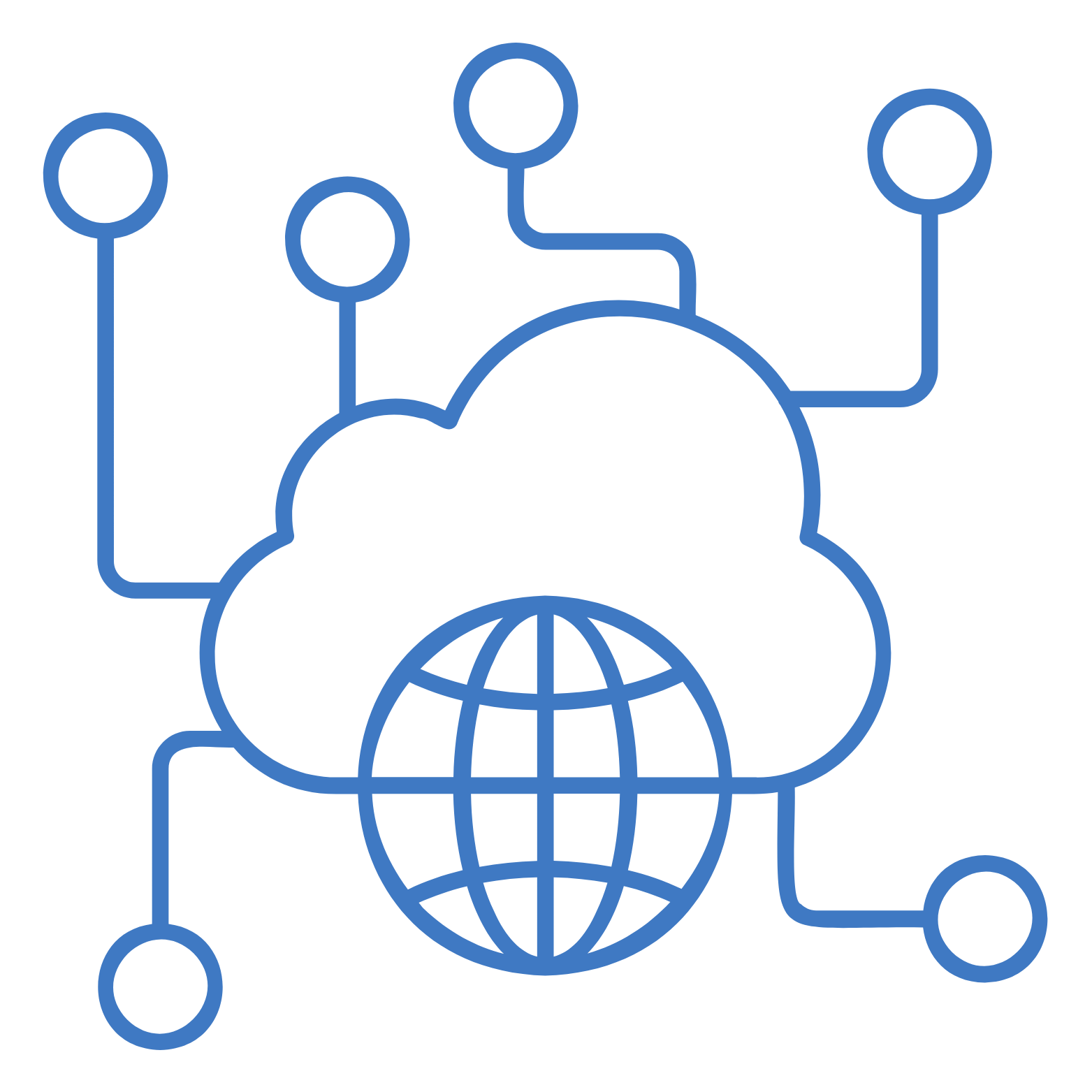Intelligent Transportation
Introduction
Transportation is a fundamental, pioneering, and strategic industry in the national economy, and it serves as a crucial support for sustainable development. With the acceleration of urbanization and the advent of a new wave of technological and industrial revolutions, the demand for transportation services is growing rapidly, exhibiting diverse, multi-tiered, and multifaceted characteristics. Against this backdrop, the Smart Transportation Research Group is dedicated to promoting the intelligent transformation of urban transportation systems. Our focus areas include efficient perception and precise control in connected and autonomous driving, decision support systems driven by urban traffic big data, navigation and collaboration in mobile robotics and autonomous systems, and the coordinated control and optimization of intelligent transportation systems. We employ advanced technologies such as artificial intelligence, big data, wireless communication, cloud computing, and edge computing. Through technological innovation, we aim to address the challenges faced by modern transportation, advance the development and application of smart transportation technologies, and contribute to the realization of intelligent, efficient, and safe urban transportation systems.

Faculty Members
Research Topics
Autonomous Driving
In future transportation scenarios centered on autonomous driving and intelligent connected technologies, research focuses on the core issues of “high reliability and high trustworthiness” in perception, cognition, decision-making, and planning within large-scale open human-machine co-driving environments, as well as studying efficient control systems and human-machine collaboration mechanisms. This aims to promote the application of autonomous driving technology in real-world transportation systems, enhancing the intelligence and safety of transportation systems.

Robot Navigation Based on Open Street Maps
The research topic focuses on fundamental models (algorthms) and applied methods in general automonous mobile systems (e.g., mobile robots and autonomous vehicles), specifically including but not limited to Autonomous Vehicle Navigation & Mobile Robots; Field Robotics (e.g., Aerial, Agricultural, Construction, Space Robotics); Robot Perception, Sensing & Vision; Robot Planning; Robot State Estimation, Localization & Mapping.











